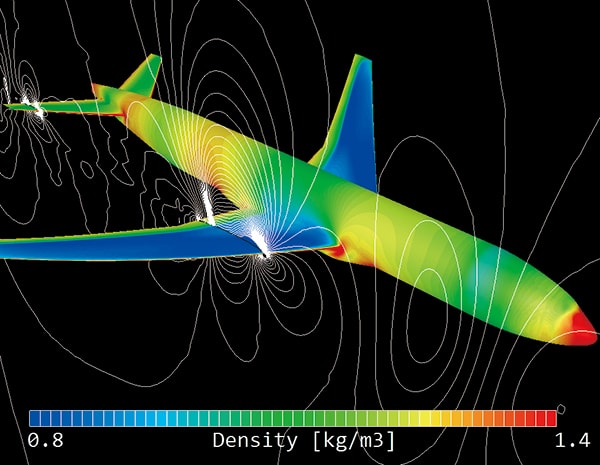Cradle CFD Student Edition
Download a FREE Student Edition of Cradle CFD on your personal desktop
scFLOW
New Generation CFD software with Multiphysics and General Purpose Capabilities

scSTREAM
Fastest and Easiest CFD software for Electronics and Architecture
How to Register
- Ensure your personal machine meets the following requirements:
- Operating system: Windows 10 64-bit and Windows 11
- Graphics device: Graphics card that supports OpenGL
- Register here
- Receive approval in 1 week and download
Note, the Cradle CFD Student Edition is designed for small, academic simulations only. Therefore, the following limitations are applied:
- No more than 1 million elements
- No more than 1000 particles for Discrete Element Method
- The maximum degree of parallelism is 2
- Hybrid parallelism of scFLOW is unavailable
The following e-Learning courses are available through a D&E e-Learning Subscription. Click here to learn how to register.
-
Advanced Postprocessing
-
Basics of CFD An Introduction to the Computational Fluid Dynamics
-
PICLS Training
-
scFLOW Demonstration - Simple Thermo-Fluid Analysis
-
scFLOW Introductory Seminar
-
scSTREAM 102 - An Introduction to scSTREAM
-
scSTREAM for Architecture - At a Glance
-
scSTREAM for Electronics 101 An Introduction
-
scSTREAM for Electronics 102 An Introduction
-
scSTREAM Introductory Seminar
-
scSTREAM: Scattering of Spray Paint Particles Inside a Naturally Ventilated Building
-
SC/Tetra 101 - An Introduction to SC/Tetra
-
SC/Tetra 102 - An Introduction to SC/Tetra
-
SC/Tetra: Importing and Cleaning CAD Data
-
SC/Tetra: Mesh Generation
- Introduction of self-study seminars for CFD beginners
-
Learning Resources